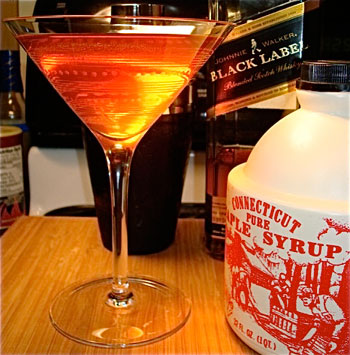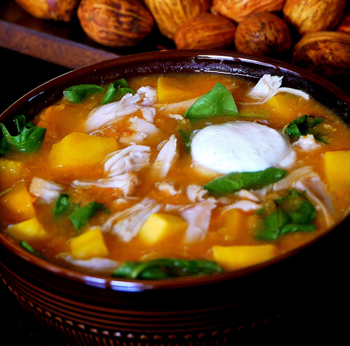From the Huffington Post
 While summer cocktails conjure up a specific image -- usually of tiny umbrellas and slices of watermelon -- autumn brings about libations that are, shall we say, less photogenic. The dearth of the fresh ingredients that make summer drinks such colorful beachside accompaniments force harvest season cocktails into a comparatively substandard role. But this seems wrong considering the other pleasures we gleefully anticipate with first nip in the air. People salivate on line at Starbucks eagerly awaiting their pumpkin spice lattes and delight in slipping on lightweight jackets to compliment the blushing foliage. Why too shouldn't lifting the year's first glass of Apple Brandy be part of the tradition?
While summer cocktails conjure up a specific image -- usually of tiny umbrellas and slices of watermelon -- autumn brings about libations that are, shall we say, less photogenic. The dearth of the fresh ingredients that make summer drinks such colorful beachside accompaniments force harvest season cocktails into a comparatively substandard role. But this seems wrong considering the other pleasures we gleefully anticipate with first nip in the air. People salivate on line at Starbucks eagerly awaiting their pumpkin spice lattes and delight in slipping on lightweight jackets to compliment the blushing foliage. Why too shouldn't lifting the year's first glass of Apple Brandy be part of the tradition?
The beauty of it is, cocktails that evoke the changing of the seasons don't have to be entirely new drinks. They can follow the same basic template classics cocktails do, just with seasonal substitutions. Here are a few suggestions.
The best place to start is swapping out the sweetener in a drink, it's the simplest and most effective way alter a cocktail. Take for instance a whiskey sour which we know is generally two parts whiskey -- bourbon, rye, Tennessee, your choice -- one part simple syrup, and one part fresh lemon juice depending on taste. Instead of simple syrup make it with maple syrup and bam(!), the autumn whiskey sour.

 The problem with "healthy" muffins is that they're usually bland, rubbery, or dry. I wanted to make a healthy muffin that actually tasted great. One you would
The problem with "healthy" muffins is that they're usually bland, rubbery, or dry. I wanted to make a healthy muffin that actually tasted great. One you would  Baby, its cold outside! I’ve found myself sippin’ and savorin’ a warm drink of sorts all day – Earl Grey this morning, Orange Zinger later on, the latter two combined and then for my nightcap, this warm cider was just the ticket.
Baby, its cold outside! I’ve found myself sippin’ and savorin’ a warm drink of sorts all day – Earl Grey this morning, Orange Zinger later on, the latter two combined and then for my nightcap, this warm cider was just the ticket. Parsnips. Parsnips parsnips parsnips.
Parsnips. Parsnips parsnips parsnips. My mother had a way of inventing traditions. “It’s Lizzie’s birthday!” she’d proclaim periodically and everyone in the family would don a party hat and
My mother had a way of inventing traditions. “It’s Lizzie’s birthday!” she’d proclaim periodically and everyone in the family would don a party hat and  sing happy birthday to one of our English Springer Spaniels. The announcement of the dog’s birth and subsequent celebration of it could occur at any time – on April 5, say, or December 12. It could happen twice a year or once every few years. But however haphazard, it became a tradition.
sing happy birthday to one of our English Springer Spaniels. The announcement of the dog’s birth and subsequent celebration of it could occur at any time – on April 5, say, or December 12. It could happen twice a year or once every few years. But however haphazard, it became a tradition. 
